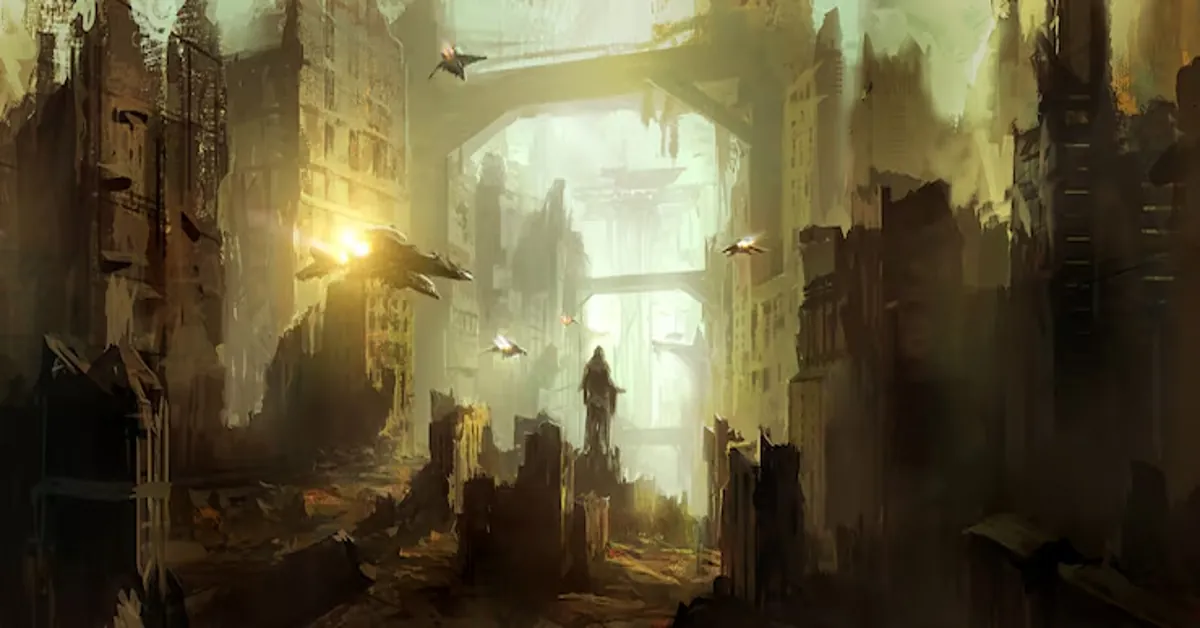Nestled at the center of the multiverse, Sigil is a city shrouded in mystery, power, and interplanar intrigue. Often referred to as the “City of Doors,” Sigil is the beating heart of the Planescape universe in Dungeons & Dragons lore. But it’s more than just a setting—it’s a legend in itself.
In this article, we’ll dive deep into the Sigil Planar Legends: its origins, myths, political factions, architectural wonders, and its enduring impact on gaming and fantasy storytelling.
What is Sigil in Planar Legends?
Sigil Planar Legends is a massive, torus-shaped city floating atop the Spire at the center of the Outlands. It is famous for its infinite number of interdimensional portals that connect to virtually any plane of existence.
Key Features:
- Exists outside time and conventional physics.
- Neutral ground for all planar factions.
- Governed by the enigmatic Lady of Pain.
Sigil Planar Legends acts as both a hub and a buffer zone, allowing travelers to traverse planes while ensuring none gain dominance within its walls.
Origins and Mythology of Sigil
The origin of Sigil is lost in myth. Some believe it predates even the gods. Its creation is closely tied to the Lady of Pain, a being whose power exceeds comprehension.
Theories on Sigil’s Creation:
- Primordial Design: Sigil was forged at the dawn of the multiverse.
- Divine Rebellion: The city rose as a neutral ground after the first war among gods.
- Sentient City: Some myths suggest Sigil is alive, responding to cosmic balance.
Each theory contributes to its legendary status among planeswalkers and scholars alike.
The Lady of Pain: Guardian of the City
The most iconic figure in Sigil Planar Legends is undoubtedly the Lady of Pain. She is not a ruler in the traditional sense but a cosmic force.
Characteristics:
- Floats above ground, never speaks.
- Wields the power to flay, maim, or banish with a thought.
- Tolerates no worship or challenge to her authority.
Her presence ensures order in chaos. Factions may clash, portals may open, but no being, not even gods, may claim Sigil as their own.
Sigil’s Architecture and Portals
Sigil Planar Legends is built on the inner wall of a ring that curves around on itself. Gravity functions perpendicularly to the city walls, giving the impression of walking up or down a curved corridor.
Unique Aspects:
- Portals Everywhere: Any door, archway, or window can be a portal.
- Portal Keys: Each portal requires a specific item or action to activate.
- Multiethnic Districts: Home to demons, celestials, modrons, and mortals.
Its structure supports the legend: Sigil is the multiverse encapsulated in a single city.
Factions of Sigil: Political and Philosophical Powerhouses
Sigil Planar Legends is not governed by kings or councils but by factions, each built on a distinct worldview.
Top Factions:
- The Harmonium (Hardheads): Believe peace is achieved through order.
- The Dustmen: Life and death are illusions.
- The Society of Sensation (Sensates): Experience defines truth.
- The Fated (Takers): Survival of the fittest.
- The Bleak Cabal: Meaninglessness is liberating.
Each faction holds sway in districts, shaping laws, commerce, and society. Their constant philosophical battles give rise to many of Sigil’s legends and conflicts.
How Sigil Shapes Planescape and the Multiverse
Sigil is more than a city; it’s the keystone of the Planescape campaign setting. Everything in Planescape revolves around planar travel, belief, and identity—and Sigil embodies all three.
Sigil’s Influence:
- Travel Nexus: Connects every plane, making adventures limitless.
- Ideological Epicenter: Faction wars mirror real-world philosophy.
- Story Catalyst: Acts as both home base and source of conflict.
For dungeon masters and players, Sigil offers infinite narrative opportunities grounded in legend.
Real-World Impact of Sigil Planar Legends
Since its introduction in the 1990s, Sigil has remained a fan-favorite setting due to its depth, mystery, and storytelling flexibility.
Cultural Reach:
- Influenced later D&D settings like Eberron and Spelljammer.
- Inspired fantasy writers like China Miéville.
- Reinforced the concept of philosophical fantasy in gaming.
Its reappearance in 5th edition D&D and other media signals Sigil’s enduring legacy in pop culture.
Expert Insights and Fan Theories
Long-time DMs and loremasters have speculated for decades about deeper secrets of Sigil Planar Legends.
Popular Fan Theories:
- Sigil is the Lady’s Prison: Built to contain her rather than ruled by her.
- Living City Hypothesis: Sigil shifts its layout and responds emotionally.
- Key to the Multiverse: Sigil holds the secret to reshaping reality.
These insights make Sigil a lore-rich playground for theorists and worldbuilders.
Conclusion and Final Thoughts
Sigil Planar Legends continue to captivate players, writers, and dreamers alike. Whether you’re stepping through a mysterious archway or arguing metaphysics with a Dustman, Sigil offers a universe of possibilities in a single city.
From its unapproachable ruler to its boundless architecture, Sigil is not just a setting—it’s a living myth, woven into the very fabric of the multiverse.
Ready to explore more legendary lore? Subscribe for deep dives into the multiverse, or share this article with fellow planeswalkers and tabletop fans!
Frequently Asked Questions (FAQ)
What is Sigil in D&D?
Sigil is a torus-shaped city at the center of the multiverse, serving as the hub for all planar travel.
Who is the Lady of Pain?
An enigmatic being who governs Sigil with absolute authority, forbidding worship and divine interference.
How do portals in Sigil work?
Each portal requires a specific key—an item, phrase, or action—to activate and transport travelers to other planes.
Can gods enter Sigil?
No. The Lady of Pain prevents any deity from entering, maintaining the city’s neutrality.
What makes Sigil legendary?
Its unique structure, political factions, interplanar access, and philosophical depth make it one of the most iconic settings in fantasy gaming.









